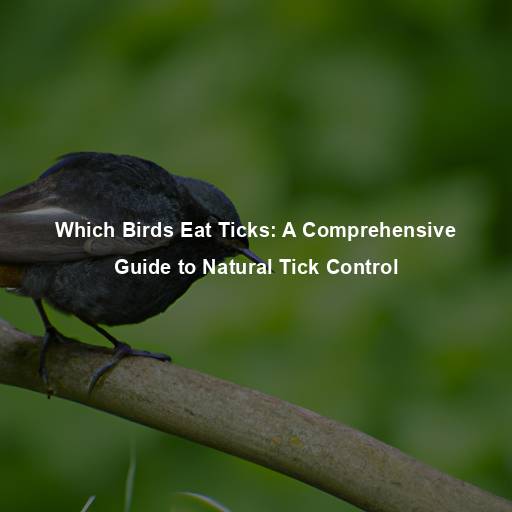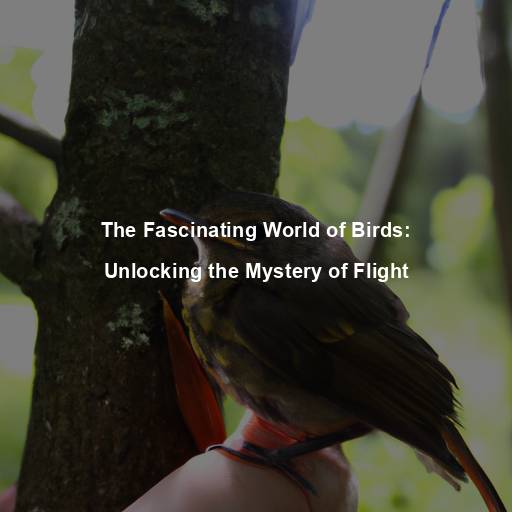The Fascinating World of Birds That Can’t Fly
Last Updated on October 24, 2023 by Evan
Take an awe-inspiring flight into the captivating world of avian diversity, where the skies are not always the limit. Brace yourself for a bewildering revelation: not all birds were blessed with the power of flight. Across the globe, in different nooks and crannies of our astonishing planet, a mesmerizing ensemble of flightless birds have gracefully adapted to a life grounded in reality. Each of these extraordinary creatures boasts a distinct repertoire of traits and adaptations that leave us both bewildered and enamored.
Contents [hide]
- 1 The Ostrich: The Majestic Giant of the Savanna
- 2 The Penguin: Masters of the Icy Kingdoms
- 3 The Kiwi: A Quirky Symbol of New Zealand
- 4 The Emu: Australia’s Feathered Sprinter
- 5 The Cassowary: A Living Relic of the Dinosaur Era
- 6 The Kakapo: A Flightless Parrot on the Brink of Extinction
- 7 The Rheas: South America’s Flightless Wonders
- 8 FAQs – What Birds That Can’t Fly
- 8.1 What are birds that can’t fly?
- 8.2 Why can’t flightless birds fly?
- 8.3 Which are some well-known flightless birds?
- 8.4 Do flightless birds have any benefits from not being able to fly?
- 8.5 Are all flightless birds completely unable to fly?
- 8.6 Are flightless birds rare?
- 8.7 Can flightless birds be found in captivity or zoos?
- 8.8 Are flightless birds at risk of extinction?
- 8.9 Can flightless birds swim?
- 8.10 Do flightless birds have any predators?
The Ostrich: The Majestic Giant of the Savanna
The Largest Living Bird
Standing tall at an impressive height of up to 9 feet and weighing around 250 pounds, the ostrich holds the title for the largest living bird on our planet. Native to the vast savannas of Africa, this flightless marvel captivates with its size and speed.
Adaptations for a Ground-Dwelling Lifestyle
While the ostrich may not be able to take flight, it has evolved several adaptations that make it perfectly suited for a life on the ground. Its wings, though incapable of providing lift, serve as useful tools for balance and courtship displays. The powerful legs of an ostrich, on the other hand, enable it to reach impressive speeds of up to 40 miles per hour, making it the fastest bird on land.
A Fascinating Reproductive Strategy
Ostriches display a unique reproductive strategy that sets them apart from other flightless birds. Instead of building nests, they dig shallow depressions in the ground where females lay their eggs. Remarkably, multiple females may lay their eggs in the same nest, and it is usually the dominant female who incubates them. This cooperative breeding system showcases the social dynamics within ostrich communities.
The Penguin: Masters of the Icy Kingdoms
A World of Cold and Ice
When pondering the peculiarities of birds that are unable to take to the skies, our minds often drift towards the enchanting sight of penguins, gracefully traversing the icy realms of Antarctica. These remarkable beings have evolved to not only endure, but to triumph in the most merciless and frozen corners of our planet. Their resilience and adaptability are nothing short of extraordinary.
Flippers for Swimming, Not Flying
The fascinating world of penguins never fails to bewilder and captivate us. Their miraculous transformation from birds with wings to superbly adapted aquatic creatures is an evolutionary marvel. These flippered wonders effortlessly glide through the depths, effortlessly maneuvering with utmost grace and swiftness. In the water, they trade the skies for a more thrilling domain, utilizing their flippers and intricately-designed feathers to dart through the aquatic realm with unparalleled prowess.
The Power of Colony Life
The world of penguins never ceases to amaze with its captivating and enigmatic nature. One cannot help but be perplexed by the sheer magnitude of their breeding and survival strategies. In these colossal colonies, numbering in the thousands, the intricate social dynamics unfold, showcasing a tapestry of cooperation and resilience. From guarding their precious offspring to taking turns nurturing the eggs, the penguins display a synchronized symphony of solidarity.
The Kiwi: A Quirky Symbol of New Zealand
A Nighttime Existence
From the mesmerizing landscapes of New Zealand emerges a remarkable creature that captures the essence of its homeland – the kiwi. Sporting a unique blend of grace and quirkiness, this flightless marvel showcases a round, yet charmingly chubby physique, complemented by a slender beak and dainty wings. The kiwi’s captivating appearance transports us to a realm where nature’s creativity knows no bounds, perplexing even the most seasoned bird enthusiasts.
A Nocturnal Lifestyle
Unlike many other birds, the kiwi is primarily active during the night, relying on its exceptional sense of smell and long beak to forage for food. This adaptation allows the kiwi to avoid competition with other bird species that inhabit the same ecological niche.
Conservation Concerns
Unfortunately, the kiwi faces numerous threats to its survival, including habitat loss and the introduction of predators. Conservation efforts in New Zealand are working tirelessly to protect this unique bird and ensure its place in the future of the country’s biodiversity.
The Emu: Australia’s Feathered Sprinter
The Second Largest Living Bird
Deep within the sprawling wilderness of the sun-kissed Australian outback, resides an enigmatic creature known as the emu. In a whimsical twist of nature’s design, this majestic bird commands attention as the second largest avian marvel to grace our planet, surpassed only by the mighty ostrich. Behold the emu’s awe-inspiring allure, as it effortlessly reaches towering heights of up to six feet, casting an ethereal silhouette against the vast Australian horizon. With their graceful long necks and robust, agile legs, these enigmatic flightless beings exhibit an otherworldly appearance that leaves even the most seasoned observers perplexed.
Swift Runners of the Outback
While emus may lack the ability to take flight, they more than make up for it with their incredible running capabilities. Emus are adept sprinters, capable of reaching speeds of up to 30 miles per hour. Their legs are not only built for speed but also serve as formidable weapons when defending themselves against predators.
A Bonding Role Reversal
Step into the intriguing world of emus, where male emus break the mold and shatter gender stereotypes by taking charge of incubating eggs and nurturing the young. Unlike traditional parenting patterns, female emus gracefully depart after laying their eggs, entrusting the paternal instincts of their male counterparts to safeguard and raise the precious offspring. This captivating glimpse into the unconventional realm of emu parenting sheds light on the remarkable diversity of strategies observed in the mesmerizing animal kingdom. Be prepared to be amazed and enchanted by this extraordinary display of gender roles and parental devotion.
As we delve into the captivating world of flightless birds, we are reminded of the incredible adaptability and diversity of life on our planet. These birds have found their own unique niches and have evolved remarkable characteristics that allow them to thrive in their respective environments. From the majestic ostrich to the endearing kiwi, each flightless bird has a story to tell and a lesson to teach us about the wonders of nature. Let us continue to celebrate and protect these extraordinary creatures, ensuring that their presence graces our world for generations to come.
A Lost Icon of the Mascarene Islands
The dodo, a flightless bird once inhabiting the islands of Mauritius, Reunion, and Rodrigues in the Indian Ocean, is a poignant reminder of the devastating impact human activity can have on vulnerable species. The dodo, a large and seemingly clumsy bird, had no natural predators until the arrival of humans and the introduction of invasive species.
Vulnerable to Human Encroachment
The dodo, once a majestic and enigmatic creature, faced a perplexing and tragic fate. A delicate dance of fate intertwined as curious sailors and eager settlers graced the shores of the wondrous Mascarene Islands. With them, they unwittingly brought a cascade of unexpected destruction, in the form of non-native predators – rats, pigs, and dogs. These voracious invaders ruthlessly plundered the dodo’s precious eggs and fiercely competed for its scarce resources.
A Lesson in Conservation
The story of the dodo serves as a powerful lesson in the importance of conservation and the need to protect vulnerable species. The extinction of the dodo sparked awareness and prompted efforts to preserve other endangered birds and animals around the world. It serves as a reminder that every species has its place in the intricate tapestry of life, and our actions can have far-reaching consequences.
The Cassowary: A Living Relic of the Dinosaur Era
A Prehistoric Connection
Step into the magical realm of the rainforests, where an enigmatic creature known as the cassowary resides. Its ethereal presence transcends time, as its captivating appearance harkens back to the ancient days when mighty dinosaurs roamed the Earth. Donning a vibrant wardrobe of deep blue hues, an imposing casque that seems plucked from a fantasy tale, and formidable talons that command awe, the cassowary invites us to unravel the mysteries of its evolutionary journey. Prepare to be enthralled as you embark on a breathtaking expedition into the captivating world of this living marvel.
A Critical Role in Seed Dispersal
In the enchanting realm of the ecosystem, the remarkable cassowary dances upon the stage of seed dispersal. Adorned with an insatiable appetite for fruits, this magnificent creature devours its delectable treats whole. Ah, but here’s where the magic unfolds – as the seeds journey through the cassowary’s mysterious digestive system, they embark on a perplexing adventure. Guided by instinct, this bewitching bird sets forth through the forest, bestowing the seeds upon the earth in its droppings, a spectacular symphony of nature’s regeneration.
An Elusive and Threatened Species
Despite its importance to the ecosystem, the cassowary faces numerous threats to its survival. Habitat loss, caused by deforestation and land development, poses a significant risk to these remarkable birds. Conservation efforts are underway to protect their remaining habitats and raise awareness about the importance of preserving their unique place in the natural world.
The Kakapo: A Flightless Parrot on the Brink of Extinction
A Parrot Like No Other
Step into the mysterious world of the kakapo, a peculiar and captivating feathered creature found nowhere else but in the mystical land of New Zealand. With its enchanting moss-green feathers, mesmerizing owl-like visage, and a charisma that’s impossible to resist, the kakapo effortlessly steals the spotlight among its avian counterparts. However, behind its extraordinary allure lies a disheartening truth – the kakapo’s survival teeters on the edge of uncertainty, making it a cause for concern among bird enthusiasts globally.
A Fragile Population
In a heartbreaking twist of fate, the enigmatic kakapo has found itself entangled in the web of adversity, as the relentless forces of habitat loss and relentless predators have cast a dark shadow upon its existence. Severely battered by these relentless trials, the population dwindled to a mere 51 individuals at its lowest ebb, pushing the kakapo perilously close to the brink of oblivion. As a glimmer of hope, a surge of conservation efforts has seen a faint ray of light cast upon the troubled species, but despite these valiant endeavors, the kakapo’s future remains veiled in uncertainty, tantalizingly uncertain.
A Beacon of Hope
The kakapo’s story serves as a beacon of hope for species conservation. Through dedicated breeding programs, habitat restoration, and predator control measures, conservationists are working tirelessly to save this unique parrot from the brink of extinction. Each successful breeding season brings renewed optimism for the survival of this charming and rare bird.
The Rheas: South America’s Flightless Wonders
A Diverse Family
Come marvel at the extraordinary inhabitants of South America, the enigmatic rheas! These captivating flightless birds, known as the greater rhea, lesser rhea, and Darwin’s rhea, stand as a symbol of uniqueness in the avian realm. Despite their striking similarities, each species claims a distinct corner of this vast continent, sparking intrigue and curiosity among ornithologists and nature enthusiasts alike. Experience the burst of diversity as we explore the fascinating world of these perplexing creatures!
Ecological Roles
Rheas play important ecological roles in their respective habitats. They are considered keystone species, as they help disperse seeds, control insect populations, and influence vegetation dynamics. Their presence is vital to maintaining the balance and health of their ecosystems.
FAQs – What Birds That Can’t Fly
What are birds that can’t fly?
Flightless birds, a captivating group of avian species, possess a remarkable trait that sets them apart from their soaring counterparts: the inability to take flight. Through the relentless course of evolution, these creatures have undergone intricate transformations, relinquishing their aerial prowess due to an array of peculiar circumstances like their geological surroundings, physical anatomy, or remarkable adaptations honed over millennia. Their enigmatic existence beckons us to unravel the perplexing mysteries that surround their remarkable journey on this vast planet we call home.
Why can’t flightless birds fly?
Throughout time, nature has crafted a peculiar assortment of flightless birds that defy the laws of soaring through the skies. These remarkable creatures have donned a diverse array of evolutionary adaptations, from hefty bodies to wings that whisper their existence, or even skeletal transformations that challenge the very physics of flight. In the grand theater of survival, flightlessness often emerges as a perplexing advantage, enabling these birds to carve out their own niche in a world where flight is not a requirement for prosperity.
Which are some well-known flightless birds?
When it comes to the captivating world of flightless birds, prepare to be spellbound by the splendid assortment of exquisite creatures that grace our planet. Journey to different corners of the globe and encounter the mighty ostrich, the graceful emu, the dapper penguin, the elusive kiwi, the formidable cassowary, and, of course, the legendary dodo. Each one of these avian wonders is an enigma in its own right, as they regale us with their distinctive qualities that have stripped them of the celestial abilities of flight. Delve into this bewildering mosaic of diversity and marvel at the intricate tapestry nature has woven.
Do flightless birds have any benefits from not being able to fly?
Birds that are unable to take to the skies possess a fascinating array of advantages. The primary one being that these feathered beings can channel their precious energy and resources towards alternative endeavors such as procreation and ground-based foraging. Furthermore, their inability to soar through the heavens grants them a modicum of safety from airborne predators, allowing for a perplexing level of protection. Lastly, this loss of flight has paved the way for the evolution of distinctive traits and adaptations, perfectly tailoring them to their unique and diverse environments.
Are all flightless birds completely unable to fly?
It’s truly fascinating how the natural world never ceases to surprise us. Take flightless birds, for instance. They may have bid farewell to their airborne days, but some of these avian wonders have managed to hold on to a fragment of their flight capabilities, albeit in the most unexpected of ways. Picture this: penguins, those charismatic creatures of the Antarctic, gracefully gliding through the depths of the ocean, performing their own version of an underwater flight called “flipping.” Astonishing, isn’t it? While they may not soar through the sky like their winged counterparts, these flight-impaired birds have found their own remarkable way to navigate their aquatic realm.
Are flightless birds rare?
Flightless birds are relatively rare compared to birds that can fly. They make up a small percentage of the overall bird species. Most flightless birds are native to specific regions or islands and have evolved independently from each other. They tend to be unique and fascinating creatures due to their specialization and adaptations to their environments.
Can flightless birds be found in captivity or zoos?
Yes, flightless birds are often found in captivity or zoos around the world. Many zoos and wildlife parks house flightless bird species as part of their exhibits, allowing visitors to learn about and appreciate these fascinating birds up close. By providing suitable habitats and care, zoos play a crucial role in the conservation and protection of these unique bird species.
Are flightless birds at risk of extinction?
Flightless birds, like their winged counterparts, face a perilous path towards a potential extinction. With their habitats under constant threat of destruction, invasive species preying on their vulnerable populations, the unpredictable effects of climate change, and the relentless encroachment of humans, the odds are stacked against them. However, there is a flicker of hope amidst this darkness – conservation initiatives that concentrate on shielding them and preserving their diminishing habitats. With concerted efforts, we can strive to secure their existence and halt the alarming decline they face.
Can flightless birds swim?
From the enchanting realm of the animal kingdom emerges a peculiar fascination: the flightless birds. These captivating creatures, while not all masters of the aquatic domain, have unraveled the secrets of a semi-aquatic existence. Amongst them, the esteemed penguins reign supreme, gracefully gliding through the water with their unique prowess. Yet, let us not forget the diverse traits exhibited by other flightless avians, for they too navigate the watery depths with varying degrees of finesse, dictated by their individual adaptations and the whims of their chosen habitat.
Do flightless birds have any predators?
Flightless birds, while lacking the ability to soar through the skies, possess an intriguing array of predators that differ from their airborne counterparts. Rather than fearing creatures that take to the air, these remarkable birds find themselves contending with land-dwelling adversaries, ranging from cunning mammals to slithering reptiles, and in some peculiar circumstances, even their fellow feathered friends. Faced with such a perplexing predicament, flightless birds have adapted strategies for survival, embracing the art of aggression, employing the tricks of camouflage, or seeking refuge in the untrodden realms of inaccessible habitats, thereby defying the odds stacked against them.





